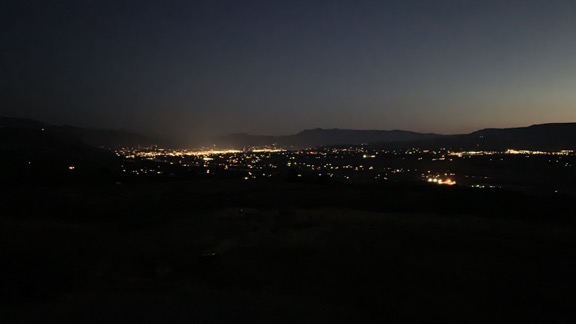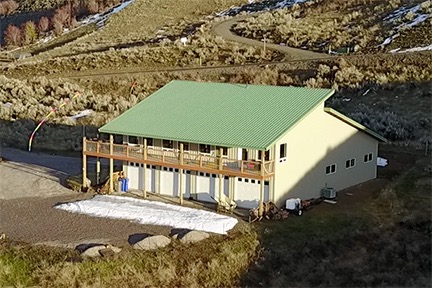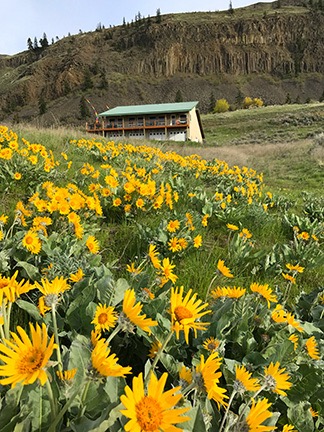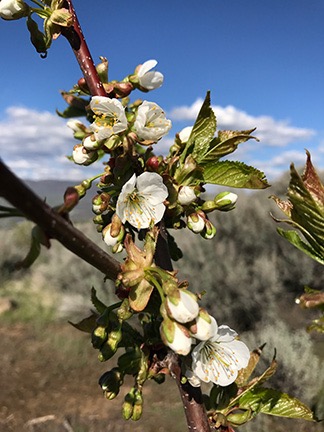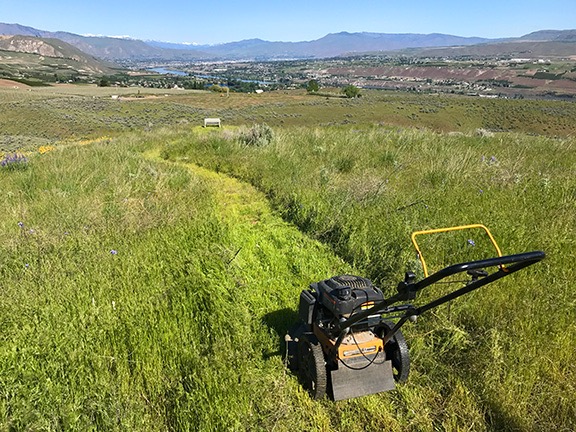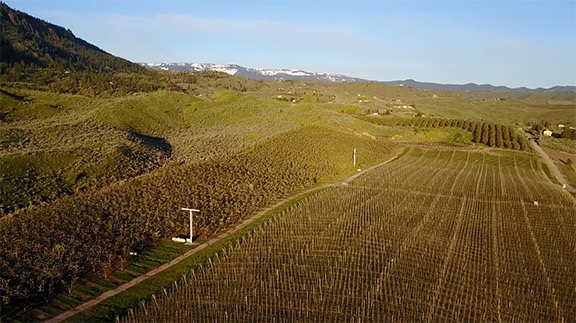A cockpit POV video from the FlyingMAir YouTube Channel.
COME FLY WITH ME and Stan as I take a Huey helicopter for a spin around Malaga, WA.
The backstory
I was doing some late season cherry drying and listening in on the frequency used by the few other pilots left on contract. Two of them were flying Hueys and we’d chatter back and forth a bit. At one point, I told them I’d bring pizza to their base, which I flew over occasionally: a pair of ponds on Stemilt Hill. Sure enough, right on schedule, I turned up with the pizza. That’s when I met the two pilots: Stan and Pete. Pete offered to let me try flying the Huey he had on contract, which belongs to his son’s company. I’m not a complete idiot — I said sure! This is the video I shot during that flight. It covers seatbelts on to seatbelts off, including engine startup and shutdown.
The video has a problem: the front facing camera, which was connected to the intercom system, was not configured properly so none of the intercom audio was recorded. This isn’t a big deal at the beginning, when the helicopter was quiet, but when the engine cranked up, it became impossible to hear us talk. I filled in the gaps when editing by explaining various things that were going on. The behind-the-scenes footage I recorded while setting up and turning on the cameras tells you how important it was for me to get it right and I still managed to screw up.
The helicopter is a B model Huey. Lots of folks think it’s a C model, but checking its N-number with the FAA clearly identifies it as a B model. Stan alludes to this at the end of the video. This particular helicopter was built in 1962 and saw action in Vietnam and Nicaragua. It has patched bullet holes in the back floor. It is now used for agricultural and lift jobs.
Stan is a part-time pilot who works when needed and travels the rest of the year with his significant other. He’s a really nice guy who addressed me as “ma’am” more times than I could count.
Later that day, I helped him get the helicopter on a trailer by repositioning the trailer with my truck, which happens to have the needed gooseneck hitch. I think I still owe him for the ride.
About the Video
- The video was recorded with a pair of GoPro Hero 7 Black cameras (https://amzn.to/2Zh7nWr). I had just received one of them via UPS 30 minutes before the flight and was using it with a new NFlightCam cable (https://amzn.to/31Vn1Zu), which is why I screwed up the audio. I should have left the cameras settings to defaults. Lesson learned.
- The video was edited on a Macintosh using Screenflow software. Learn more about it here: https://www.telestream.net/screenflow/overview.htm
- The intro music is by Bob Levitus, famed “Dr. Mac.” You can find him here: http://www.boblevitus.com/
About me
I have been flying for about 20 years. My nearly 4,000 hours of flight time is in Robinson R44, Robinson R22, and Bell 206L (Long Ranger) helicopters. This was my first time flying a Huey.
I try to drop cockpit POV videos every Sunday morning and drop “extras” with more info about owning and operating a helicopter midweek. I also host occasional livestreams with Q&A chats. Subscribe so you don’t miss anything new! And tell your friends. The more subscribers I have, the more motivated I am to keep producing videos like this one.
Any Amazon links on my channel are affiliate links. If you click one of them and buy something, Amazon sends me a few pennies. Enough pennies make a dollar. Enough dollars buy new equipment. It doesn’t cost you anything so I hope you’ll shop with one of those links. Thanks.
Still reading? Thanks! Maybe you’ll consider buying something from my Etsy store to help support this channel? Start here: https://www.etsy.com/shop/FlyingMAir
Or better yet, to support this channel on an ongoing basis, consider becoming a member. This link will get you started: https://www.youtube.com/channel/UCLGD_GbGsS6YKK_Ekx0QMqQ/join

